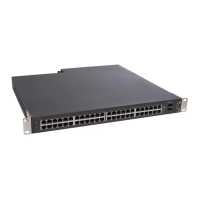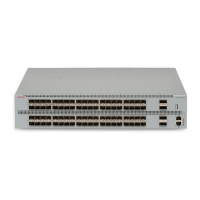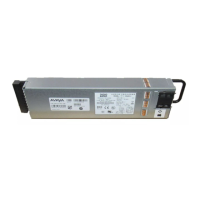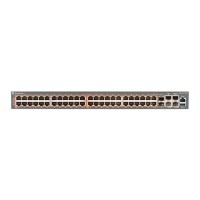Table 16: Switch cabling requirements
Required Cable Description
10/100/1GBase-T Ports The interconnect cabling must conform to the Cat5e, Cat6, or
Cat6e specification of the Commercial Building
Telecommunications Cabling Standard, ANSI/TIA/EIA 568-B
fitted with an RJ-45 Module Jack.
Console Port Serial cable with a DB-9 female connector on both ends. The
maximum length for the console port cable is 25 feet (8.3
meters).
Shared SFP Transceiver
Ports
Varies with the installed SFP Transceiver. Refer to the
documentation that was shipped with the SFP Transceiver for
specifications.
XFP Transceiver Ports Varies with the installed XFP Transceiver. Refer to the
documentation shipped with the XFP Transceiver for
specifications.
USB Ports USB 2.0 compliant cable with a USB Type A connector on both
ends.
Important:
In Autonegotiation mode, the Avaya Ethernet Routing Switch 5500 Series automatically
provides the proper MDI/MDI-X connection on the RJ-45 ports; thereby eliminating the need
for crossover cables. When Autonegotiation is disabled on 10/100 ports, they are configured
as an MDI-X connection.
1. Choose a Cascade up or Cascade down arrangement.
2. Connect cables as shown in the Job Aid for each type.
3. Select the base unit.
4. Connect the console cable.
5. Connect the AC power cord.
If you assign the base unit and non-base units with the switches powered up, you
must reset the switches for the assignments to be applied.
Stack configurations
The following illustrations show Cascade up and Cascade down cable arrangements, as well
as the stack connectors for the 5500 and 5600 Series switches.
Procedures for installation of the switch
86 Avaya Ethernet Routing Switch 5000 Series Installation December 2010

